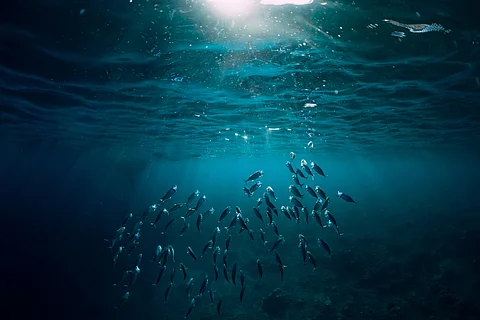

At the United Nations Biodiversity Conference (COP15) in 2022, world leaders tabled a bold promise to protect 30 per cent of the Earth’s oceans by 2030. This commitment aimed to tackle the threats emanating from climate change, overfishing and pollution.
However, in the current situation, merely 2.8 per cent of our oceans are effectively protected. Despite the ocean covering over 70 per cent of our planet and playing a vital role in carbon absorption and climate regulation, much of it remains unprotected or only weakly regulated.
The report titled On Track or Off Course? Assessing Progress Toward the 30x30 Target in the Ocean showed that while governments have made pledges, many protections exist only on paper.
According to the report, only 8.3 per cent of the ocean is designated as Marine Protected Areas (MPAs). These areas are intended as safe havens for marine life but often allow harmful practices like industrial fishing, oil extraction, and dumping.
The abovementioned situation leads to what experts call blue washing, where areas are labelled as protected but do not truly safeguard marine life.
For instance, in the United Kingdom, 47 per cent of its waters are classified as MPAs, yet less than one per cent of these areas are considered effective due to continuing destructive activities such as bottom trawling, which drags heavy nets across the ocean floor.
Other regions show similar issues like Latin America and the Caribbean have designated 27 per cent of their waters as MPAs, but only 2.5 per cent are likely effective. North America has protected 22 per cent, with 17 per cent assessed as effective, while Europe has protected 20 per cent, only seven per cent of which are effectively protected.
What makes the situation even more alarming is that the global marine area under protection has only increased by 0.5 per cent since COP15 UN Biodiversity Conference in 2022. At this pace, the report warns, only 9.7 per cent of the ocean will be protected by 2030 far from the 30 per cent target.
The report also shows that only 14 countries have designated more than 30 per cent of their waters as protected areas.
These group of countries comprise Monaco (100 per cent); Palau (99 per cent); UK (68 per cent); Kazakhstan (52 per cent); New Zealand (49 per cent). However, just two countries have been found likely to have effectively protected more than 30 per cent of their waters, Palau (78 per cent) and the UK (39 per cent).
The report also finds that only four countries have significantly increased protection since 2022: Comoros has protected an additional 28 per cent; Oman an extra 16 per cent; France 11 per cent; and Australia 5 per cent.
Beth Pike, Director of the Marine Protection Atlas, highlighted the urgent need for change, “Less than 3 per cent of marine areas are truly protected. The gap between promise and action is huge. We need real change now, not just words on paper.”
The stakes are high. The ocean is essential not only for marine life but also for fighting climate change, absorbing 90 per cent of the heat from human activities and about 30 per cent of our carbon dioxide emissions.
Healthy oceans are vital for our climate defence and impact millions of lives, from coastal fishermen to global climate initiatives.
Despite the grim findings, there are still paths to recovery. The report urges governments to take immediate steps, including ratifying the High Seas Treaty to allow for protected areas in international waters, which currently cover two-thirds of the ocean but are barely protected. Only 1.4 per cent of the high seas have some form of protection.
The report identifies five areas needing urgent action to achieve 30X30 target, which are —
Firstly, expanding the number and size of marine protected areas should be a focus, as demonstrated by Panama's significant MPA expansion. Banco Volcán MPA expanded from 14,000 km² to over 90,000 km², protecting nearly 50 per cent of Panama's seascape.
Secondly, ensuring effective management of existing MPAs as in the UK’s Blue Belt Programme exemplifies how targeted management and support can enhance marine environments in overseas territories.
Thirdly, integrating indigenous knowledge in conservation practices is crucial as exemplified in the successful conservation efforts of the Inhambane Bay Community Network in Mozambique and the Gitdisdzu Lugyeks MPA in Canada. These two cases highlight the benefits of incorporating traditional ecological knowledge and community engagement in the management of protected areas. Communities have effectively identified key fishing areas and prioritised their protection.
Programmes promoting scuba diving training and alternative employment opportunities have further strengthened local engagement, reducing pressure on marine resources while enhancing livelihoods.
Fourth moot point entails providing financial support and capacity building wherein developed countries can make good on their commitment to deliver at least $20 billion per year to developing countries by 2025 and $30 billion by 2030.
Lastly, improvement in reporting and data collection is prioritised.
Although the findings present a stark reality about the current state of ocean conservation, they also illustrate that there are viable paths forward. Collaborative initiatives, involving both governments and local communities, must dominate future efforts to protect our precious marine ecosystems.